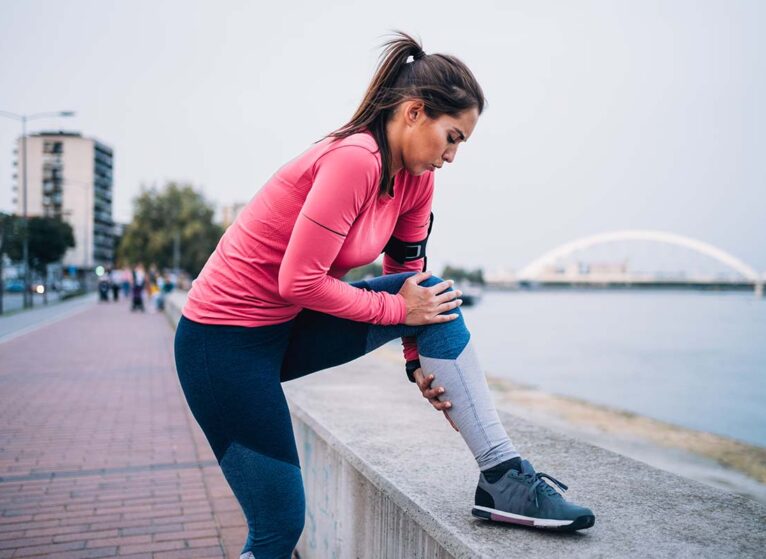Someone sticking a needle in your muscle and wiggling it around sound fun? It didn’t to me either. But, at least for me, a physical therapy technique trigger point dry needling is worth a little discomfort.
Curious about trying it? Read on to learn more about dry needling therapy.
What is Dry Needling Therapy?
Dry needling therapy is one of the tools physical therapists use to reduce pain. It loosens up tight spots in your muscles.
When she does dry needling, UVA Health physical therapist Erica Teune, DPT, puts a small needle through your skin and into a taut band of muscle (called a myofascial trigger point). She moves the needle around until the muscle twitches. That “hits the muscle reset button” on tightness, Teune explains.
It’s called “dry,” because there’s no medication in the needle. All the relief comes from releasing the trigger point.
What Can Dry Needling Therapy Treat?
Sidelined by Pain?
UVA Health’s sports medicine team can help you find the cause and help you get back to your favorite activities.
Dry needling helps with many different conditions, such as:
- Joint problems
- Tendonitis
- Whiplash
- Muscle strains
- Iliotibial (IT) band syndrome
- Migraine and tension headaches
- Spine issues
- Temporomandibular pain (TMJ)
It’s usually one part of a complete physical therapy plan.
What Does Dry Needling Feel Like?
Dry needling can be a little uncomfortable. Sometimes it feels weird when the therapist moves the needle around. How uncomfortable it is depends on the muscle.
Does It Work?
Research shows dry needling helps pain, Teune says.
“There was an umbrella review posted in the Journal of Clinical Medicine about the effectiveness of dry needling for musculoskeletal pain that showed evidence in favor of dry needling,” she shares.
Personally, I can’t deny the benefits of dry needling. It’s helped me by loosening painfully tight muscles from knee and elbow problems. That’s after stretching and foam rolling haven’t been enough. It’s even helped my chronic migraines.
How Do You Get Dry Needling Therapy?
You need a prescription from your doctor for a physical therapist to do dry needling.
Your therapist will ask questions about your health to make sure dry needling is safe for you. They’ll also talk about the goals and risks of the treatment with you.
“We recommend drinking plenty of water after, using heat, and we educate on stretching and specific exercises,” Teune says.


